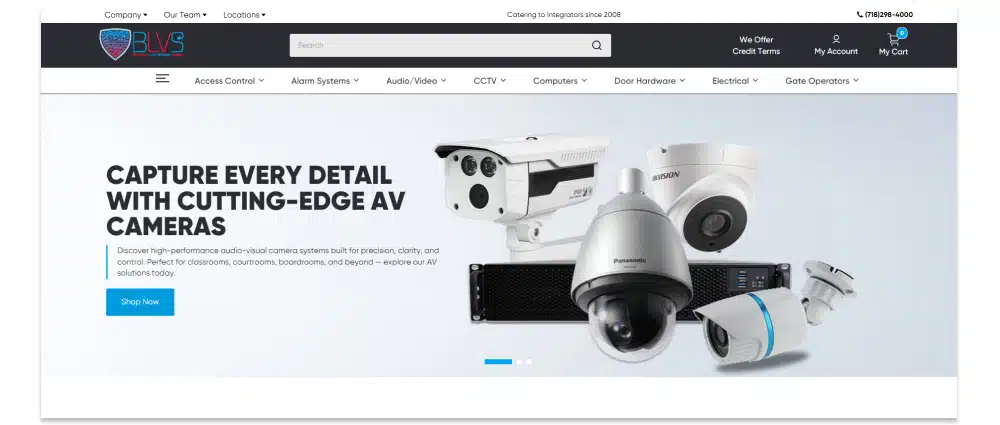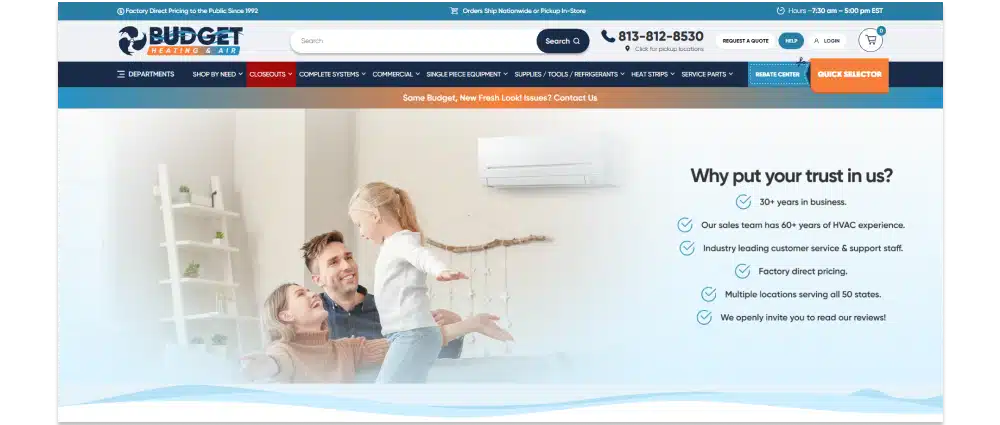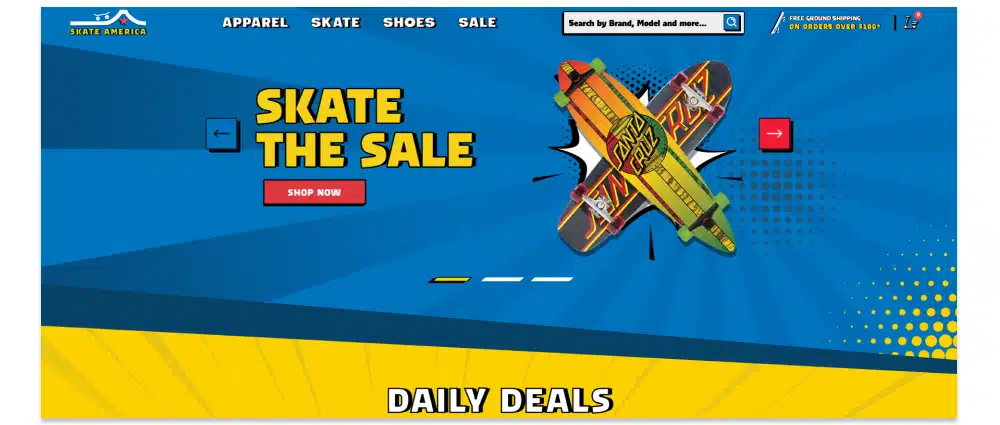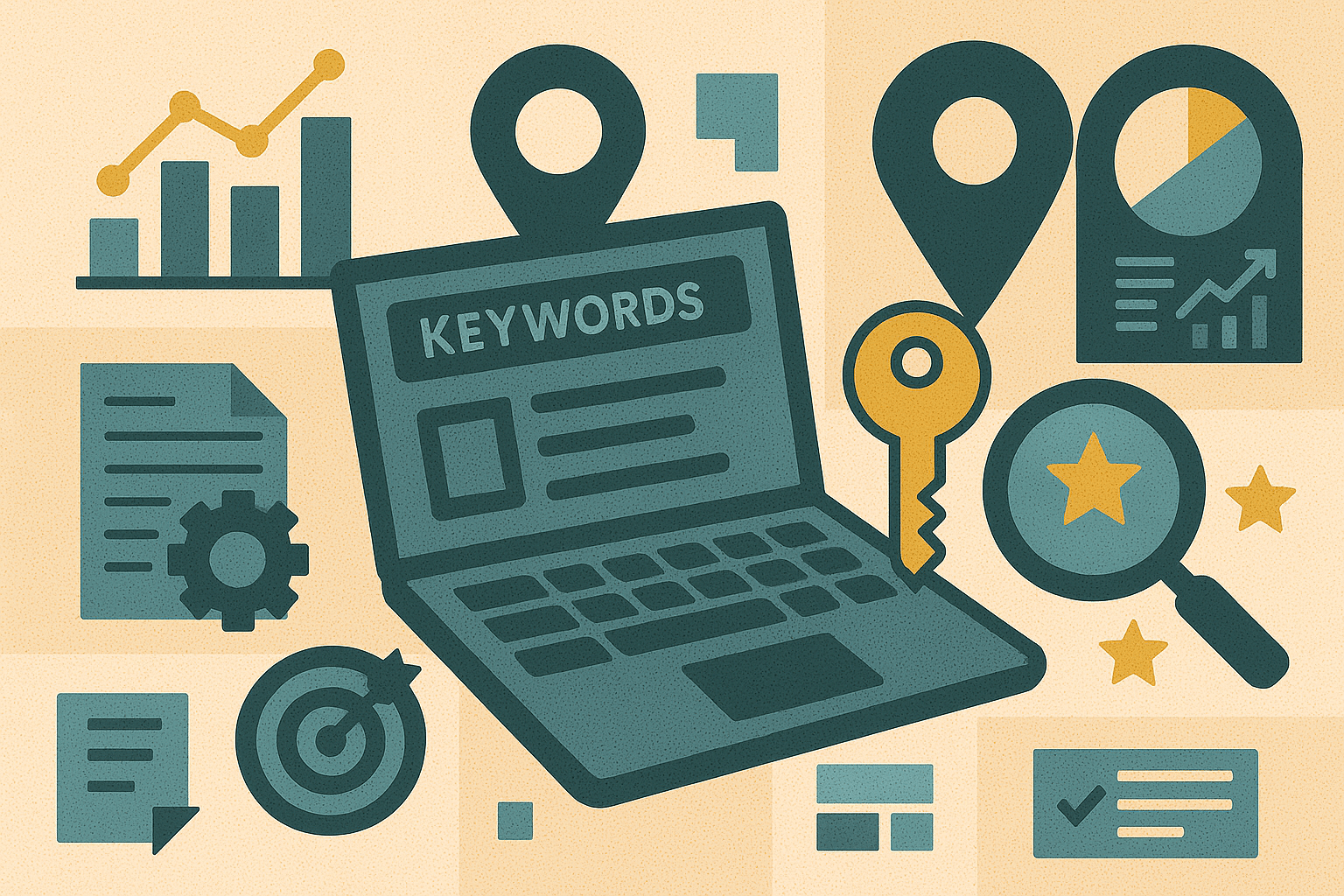Most B2B marketing misses the mark because it forgets who’s actually on the other end. Real people. Not “decision-makers” or “stakeholders,” just people trying to solve problems at work. The companies that remember that and communicate clearly are the ones that get noticed and win business.
B2B marketing isn’t boring, it’s misunderstood. Too many brands hide behind buzzwords or corporate jargon instead of speaking directly to buyers. Those buyers might work in procurement or operations, but they’re still people looking for a reliable solution to a specific need. If your marketing doesn’t reflect that, you get overlooked. Strong B2B marketing isn’t about sounding corporate. It’s about clarity, credibility, and showing you understand your buyer’s world well enough to help them succeed.
What B2B Marketing Actually Means
B2B marketing is about selling products or services from one business to another, not to individual consumers. That could mean a manufacturer supplying parts to automotive companies, a distributor selling wholesale equipment to contractors, or a supplier providing materials to retailers.
Even though you’re marketing to a company, you’re still connecting with people. The person researching your website or opening your email isn’t a faceless organization. They’re a purchasing manager under deadline, an operations lead comparing options, or a business owner trying to find a dependable vendor. Your marketing needs to speak to that reality.
Why B2B Marketing Feels Different from B2C
B2B and B2C marketing operate differently, and the strategies that work for one rarely translate directly to the other.
B2C Sells Emotion
In B2C, emotion drives decisions. A buyer doesn’t need a long approval process or ROI calculation. They buy because something feels right. That’s exactly why design and storytelling matter so much for consumer brands.
Take our client Skatemerica. They cater to skaters who grew up on bold graphics, street culture, and nostalgia. Our goal for their redesign was to capture that spirit through a comic-style aesthetic that feels nostalgic and high-energy. The site feels like flipping through a comic book, instantly connecting with visitors on an emotional level before they ever hit “Add to Cart.”
That emotional connection builds loyalty. It’s not about listing specs or features. It’s about creating an experience that makes the buyer feel part of something bigger: a lifestyle, a culture, a memory. That’s what makes B2C design so powerful when it’s done right.
B2B Sells Logic and ROI
 Brooklyn Low Voltage Supply Website (BLVS)
Brooklyn Low Voltage Supply Website (BLVS)
When a business buyer decides whether to partner with a supplier or place a bulk order, emotion takes a back seat to results. They want to know that your product will save them time, reduce costs, or help them serve their own customers better. That’s why the B2B sales process involves multiple people, purchasing managers, operations leads, and finance teams, each looking for a clear reason to move forward.
Take our client BLVS. They serve electrical contractors, low-voltage technicians, and commercial buyers who need dependable access to cables, connectors, and lighting supplies. Their website had to earn trust fast and make ordering simple. These buyers aren’t browsing for fun, they’re working against deadlines and need to find the right parts quickly. Our goal was to create a clean, search-friendly layout with clear categories, real-time inventory, and straightforward product information. For B2B buyers like theirs, success comes from removing friction and helping them get what they need without hesitation.
That’s a completely different approach from a brand like Skatemerica, which sells directly to consumers. Their design focuses on energy, discovery, and emotion. BLVS’s design focuses on precision, speed, and reliability. Both work because they’re built around what their customers value most.
Why B2B Marketing Matters for Growth
Good B2B marketing doesn’t just attract leads. It builds authority, shortens sales cycles, and creates lasting customer relationships that pay off for years.
When your website clearly explains what you do and who you serve, buyers arrive already confident in your capabilities. When your content demonstrates expertise, trust builds before the first conversation. When your SEO brings consistent organic traffic, you’re less reliant on paid ads or outbound sales to fill your pipeline.
Companies that invest early in B2B marketing see the payoff compound over time. A case study becomes a long-term sales tool. A blog that ranks well on Google drives qualified leads every month. Thought leadership on LinkedIn keeps your brand top of mind when buyers are ready to switch vendors.
Core B2B Marketing Strategies That Actually Work
Define Your Ideal Client Clearly
You can’t market effectively if you don’t know who you’re talking to. “We sell to everyone” is the fastest way to connect with no one.
Get specific. What industries rely on your products? What company sizes are your best customers? What problems do they need solved? For example, selling to industrial suppliers looks very different from marketing to corporate offices or local retailers. Each audience has its own buying process and priorities, your marketing should reflect that.
Use the data you already have. Look at your CRM to find which customers generate the most revenue or reorder consistently. Check your analytics to see which industries visit your site most often. Study LinkedIn to understand the roles and challenges of your ideal buyers. The clearer your picture, the stronger your messaging will be.
Make Your Website Your Best Salesperson
 BudgetHeating.com website designed to build trust and simplify B2B purchasing
BudgetHeating.com website designed to build trust and simplify B2B purchasing
Before reaching out, most buyers research on their own. They’re checking reviews, comparing specs, and judging credibility based on your website. By the time they call or email, they’ve already formed an opinion.
If your website feels outdated or hard to navigate, you’re losing sales before they even start. Your homepage should clearly communicate what you offer and why it matters. Product or service pages need to show how your solution solves a problem, not just list features. Case studies or testimonials should demonstrate real results that build confidence.
Trust signals matter. Display testimonials, certifications, and recognizable partners that show reliability. If you’re unsure how visitors interact with your site, tools like Hotjar and Google Analytics reveal where users get stuck. Use those insights to simplify their path and encourage action.
Lead with Value-Driven Content
B2B buyers don’t want a hard sell. They want to learn, compare options, and make an informed decision. That’s where valuable content comes in.
Case studies show proof. How-to guides demonstrate expertise. Product comparisons help buyers evaluate solutions. Webinars position your brand as a knowledgeable resource. When you consistently educate your audience, you stay top of mind until they’re ready to buy.
The key is education, not pressure. If you’re a manufacturer, create guides that help customers choose the right materials for their projects. If you’re in medical supply, explain safety standards or compliance updates in plain language. Helpful content builds credibility and strengthens long-term trust.
Invest in SEO for Long-Term Leads
Paid ads stop the moment you stop paying. SEO keeps delivering results long after you publish.
Ranking for high-intent keywords means showing up when buyers are actively searching for what you sell. If you offer wholesale electrical components, ranking for “commercial wiring supplies” or “bulk electrical equipment” brings in buyers who are ready to order. Those leads convert faster because they’re already motivated.
SEO takes time, but it compounds. Optimize your product and category pages, publish content answering buyer questions, and build authority through backlinks and consistent updates. Free tools like Google Search Console help track progress, while Ahrefs and SEMrush uncover keyword opportunities.
Use LinkedIn to Connect Authentically
LinkedIn is where B2B conversations happen. It’s the platform where decision-makers spend time researching products, reading insights, and engaging with vendors. If your business isn’t active there, you’re missing valuable visibility.
Share customer success stories. Comment on industry trends. Post insights that show your expertise. Engage with potential buyers naturally, not with canned pitches but real conversation. The goal is to build relationships and stay visible when your audience is ready to take action.
Nurture Leads Through Email
B2B sales cycles are longer, and most leads aren’t ready to buy immediately. Email marketing keeps your brand visible without constant follow-ups.
Segment your list by where buyers are in their journey. Someone requesting a quote needs different information than someone downloading a product guide. Personalize your messages based on industry and interest. Tools like HubSpot, ActiveCampaign, and Mailchimp make it easy to automate and track engagement.
The goal is consistent, valuable communication. A monthly newsletter, a follow-up with relevant case studies, or a simple product update can keep your brand top of mind until the timing is right.
Common B2B Marketing Mistakes
The biggest mistake is talking to companies instead of people. Writing like you’re addressing an organization makes your marketing cold and forgettable. Real people make the decisions. Speak to them.
Overcomplicating your message is another issue. If your homepage says you “leverage synergistic solutions to optimize enterprise ecosystems,” no one knows what that means. Simplicity and clarity win every time.
Relying only on outbound efforts, cold calls, trade shows, and ads, without building inbound authority drains your resources. When your content and SEO attract leads organically, you don’t have to chase them.
Finally, ignoring data means you’re guessing. Track performance, identify what works, and refine. Data is how you turn marketing from guesswork into growth.
Measuring What Actually Matters
Track the metrics that show real progress:
- Website conversions like form fills and quote requests
- Cost per lead to measure campaign efficiency
- Organic traffic growth for SEO visibility
- Email engagement rates for relevance
- Keyword rankings for your core products or services
You don’t need complicated dashboards. Tools like Google Analytics, Google Search Console, and HubSpot CRM provide all the insights you need. The goal isn’t to track everything, it’s to understand what drives results so you can double down on what works.
When to Bring in an Agency
Managing marketing in-house works for a while, but eventually growth stalls or becomes inconsistent. If you’re spending more time figuring out campaigns than fulfilling orders, or if your website traffic isn’t converting, it may be time to call in help.
MAK Digital partners with B2B and eCommerce brands to build websites, SEO strategies, and marketing systems that actually convert. We’ve helped manufacturers, distributors, and online retailers strengthen their presence, reach the right buyers, and grow sustainably.
If your marketing isn’t delivering, let’s find out why. contact us and together we can see what’s holding you back. We’ll show you what to fix and how to start winning more qualified leads.

 Eashan Mehta
Eashan Mehta







